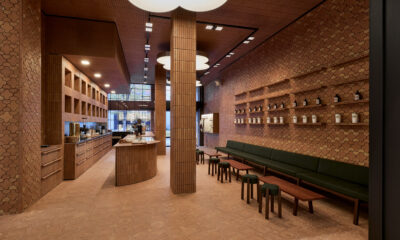The Numbers
Situated on Long Island across the East River, Queens was officially incorporated as a New York borough in 1898. Ranked as the one of the largest neighborhoods in the U.S., it is the most densely populated behind the Bronx, Manhattan and Brooklyn.
Queens is known for its racial and ethnic diversity. Its 2.3 million residents speak 130-plus languages, according to Babbel. The borough covers two zip codes and has seen an increase in retail vacancy due to rent costs, online shopping and regulatory burdens.
The Pulse
IKEA (Leiden, Netherlands) will open its third New York location in the summer of 2020 in the Rego Center. This decision was brought on by the fact that the population in Queens is steadily increasing.
“Queens is huge in terms of landmass, it also [has access] to the ocean,” says David Ashen, Founder of dash design (New York).
Advertisement
According to a recent study by New York City Comptroller Scott Stringer’s office, vacancy rate in the five boroughs recently rose by almost 50 percent. Queens’ vacancy rate in profiled neighborhoods reached 25 percent and 6 percent in Staten Island.
The Hot Spots
Known for its diversity, Queens has an international dining destination on virtually every block. Casa Enrique is home to tantalizing Mexican food, while Turkish Grill serves authentic Turkish and Mediterranean cuisine. “If you want good Indian food, good Thai food … you can spend a week and have different courses for every meal,” says Ashen. “There are layers to the neighborhood.”
The Noguchi Museum and MoMA PS1 are among the borough’s multitude of cultural attractions. Designed by Japanese-American sculptor Isamu Noguchi, The Noguchi Museum houses the artist’s sculptures, stage designs, architectural models and drawings. MoMa PS1 is one of the nation’s largest museums dedicated to contemporary art.
“These [are] two great, important cultural institutions [and they’re] not too far from each other,” says Ashen.
Obstacles and Opportunities
Advertisement
Opening a successful business in Queens can be competitive, especially considering its wide diversity and high rent. Ashen expresses the importance of examining each neighborhood in Queens. “I think when you go into neighborhoods that are like Sunnyside, Rockaway or Jackson Heights, you need to be more authentic to the needs of the community, and be aware of the cultural differences,” Ashen says.
In more established neighborhoods, national brands with a mid-market reach could do well. Generally for newcomers, trying to open a high-end coffee shop or a boutique could be challenging. The authenticity of the new business could ultimately determine its survival.


 Headlines1 week ago
Headlines1 week ago
 John Ryan2 weeks ago
John Ryan2 weeks ago
 Headlines7 days ago
Headlines7 days ago
 Headlines2 weeks ago
Headlines2 weeks ago
 Headlines1 week ago
Headlines1 week ago
 Retail Buzz3 days ago
Retail Buzz3 days ago
 Headlines1 week ago
Headlines1 week ago
 Headlines1 week ago
Headlines1 week ago















